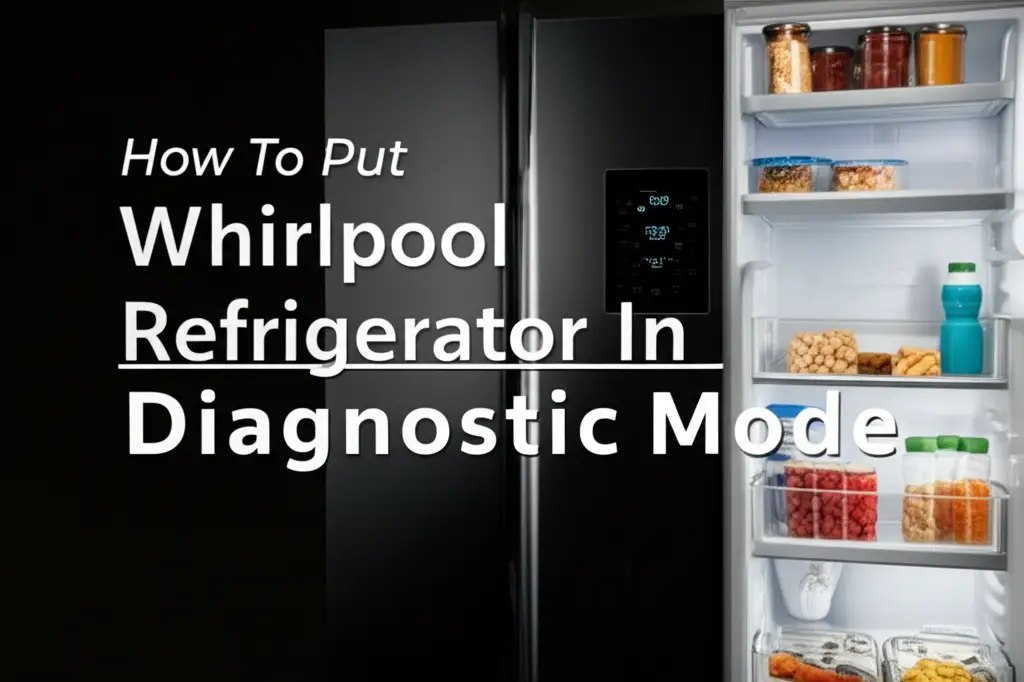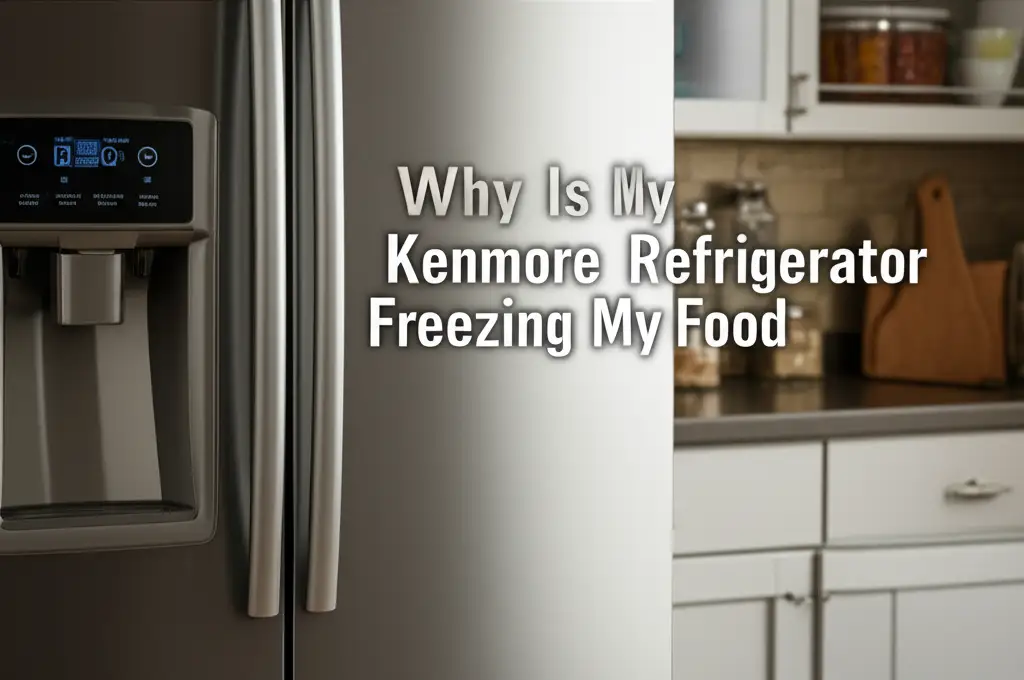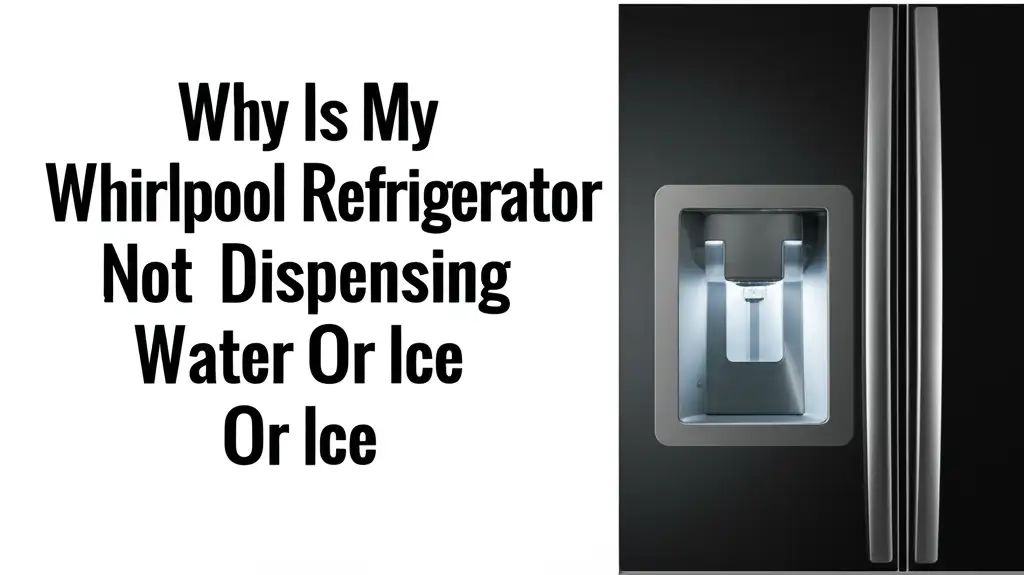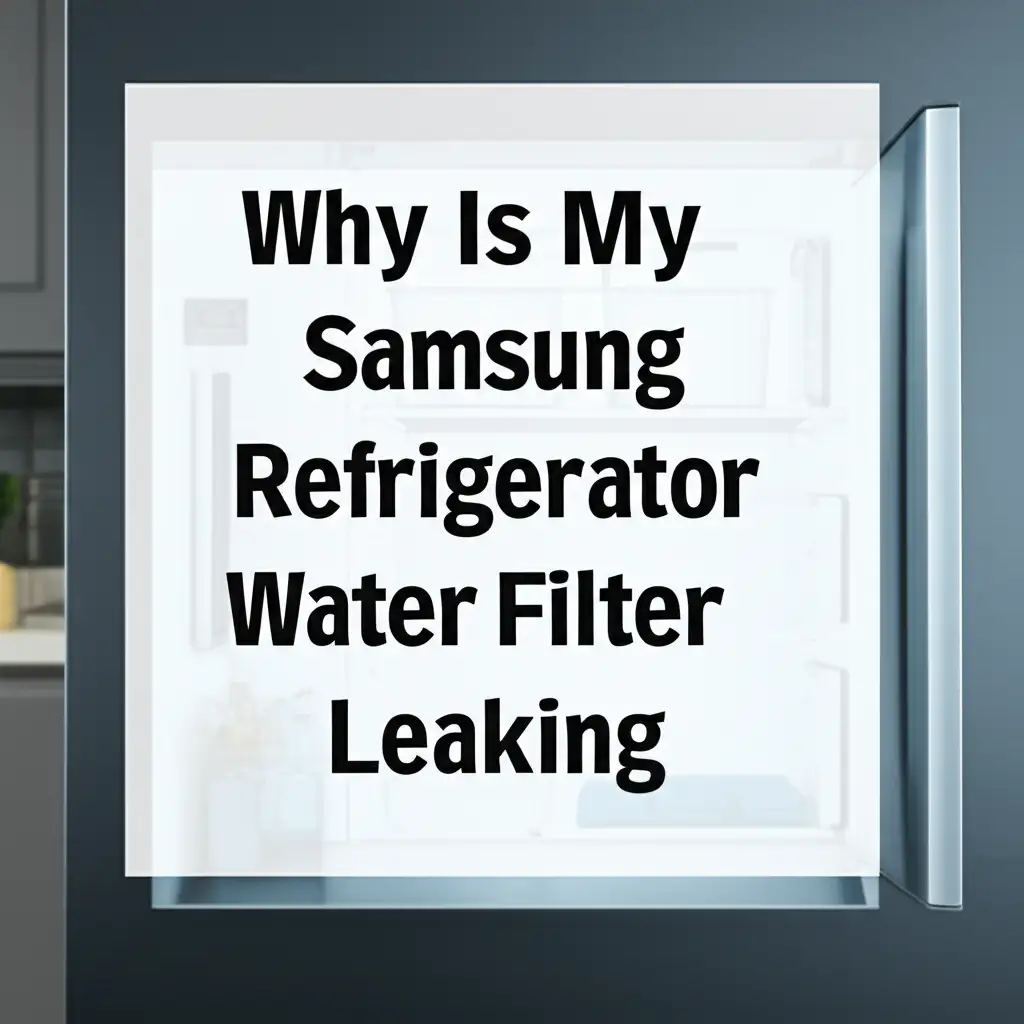· Davia Murnell · Appliance Repair · 21 min read
Why Does My Whirlpool Refrigerator Keep Tripping The Breaker
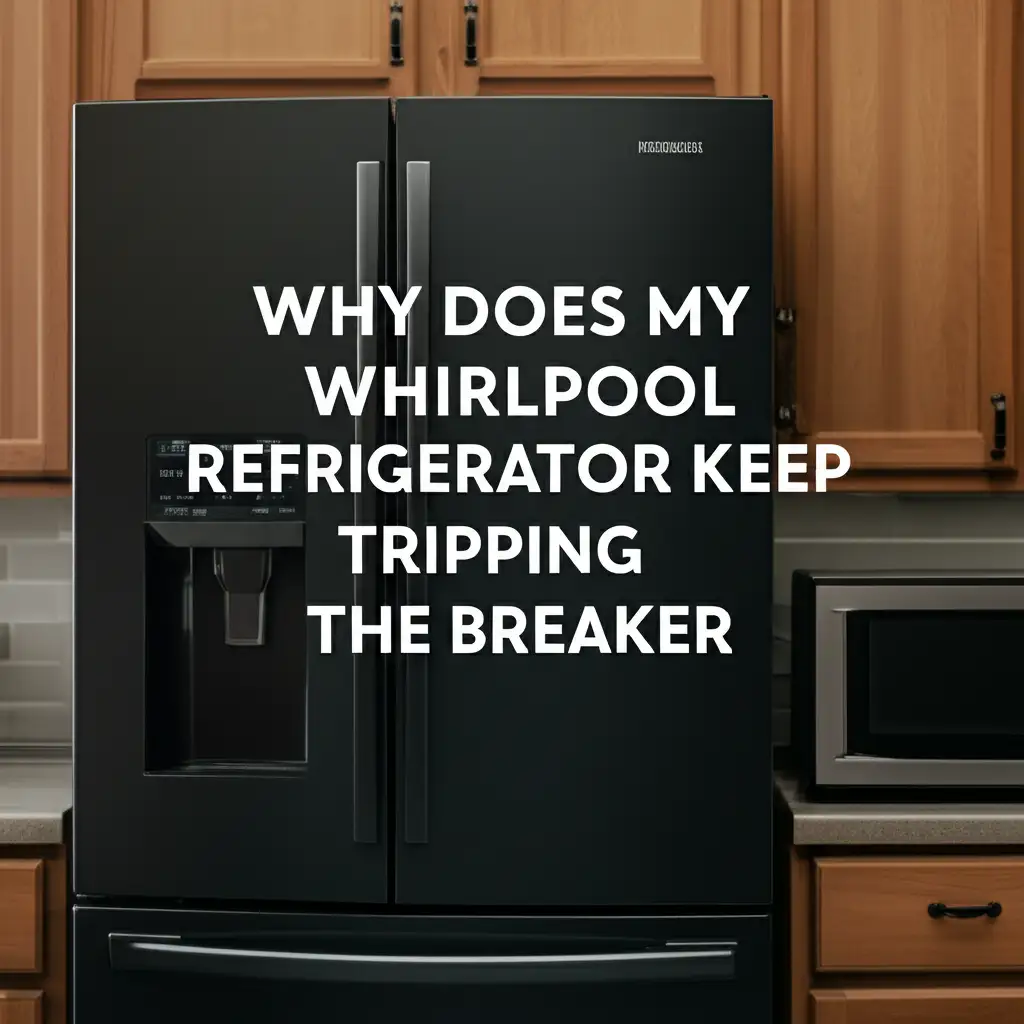
Why Your Whirlpool Refrigerator Keeps Tripping the Breaker
Imagine this: you walk into your kitchen, and the refrigerator hum is gone. All your food is slowly warming. You check the electrical panel, and sure enough, the breaker for your kitchen circuit has tripped. If your Whirlpool refrigerator keeps tripping the breaker, it can be a frustrating and worrying problem. It disrupts your home and threatens your groceries. You need a reliable solution fast.
I know this situation well. A constantly tripping breaker indicates an electrical issue. This issue can stem from the refrigerator itself or your home’s electrical system. This article will explain why your Whirlpool refrigerator trips its breaker. We will cover common causes and provide clear steps to identify the problem. You will learn how to fix some issues and when to call a professional. This guide will help you get your Whirlpool refrigerator running smoothly again.
Takeaway
- Identify if the breaker trip is due to an overload or a short circuit.
- Check the refrigerator’s power cord and outlet for damage.
- Inspect major components like the compressor, fan motors, and defrost heater for faults.
- Clean condenser coils regularly to prevent overheating and excessive power draw.
- Ensure the refrigerator is on a dedicated circuit to avoid overloading.
- Consult a qualified electrician or appliance technician for complex electrical issues or component failures.
Why Does My Whirlpool Refrigerator Keep Tripping The Breaker?
Your Whirlpool refrigerator keeps tripping the breaker usually due to an electrical overload, a short circuit within the appliance, or a faulty component like the compressor, fan motor, or defrost heater. Damaged wiring or a shared circuit with other high-power appliances can also cause this problem, demanding prompt investigation.
Understanding Your Home’s Electrical System and Breakers
Your home’s electrical system is a complex network. Circuit breakers are safety devices in this system. They protect your home from electrical overloads and short circuits. When too much current flows through a circuit, the breaker “trips.” This action shuts off power to prevent damage to appliances and reduce fire risks.
A tripped breaker means a problem exists. It can indicate a minor issue or a serious electrical fault. Your Whirlpool refrigerator is a significant appliance. It draws a lot of power. When it causes a breaker to trip, you must investigate. Understanding why breakers trip is the first step in troubleshooting your refrigerator.
Overload vs. Short Circuit
There are two main reasons a breaker trips. An “overload” happens when too many appliances draw power from one circuit. The circuit cannot handle the combined electrical load. For example, if your refrigerator, microwave, and toaster are all on the same circuit and operating simultaneously, the breaker might trip. This situation means the circuit is drawing more amperage than it is rated for.
A “short circuit” is more serious. It occurs when a hot wire touches a neutral wire or a ground wire. This creates a direct path for electricity, bypassing the appliance’s resistance. A short circuit causes a sudden, large surge of current. This surge instantly trips the breaker. Short circuits usually indicate a fault within an appliance or faulty wiring. They pose a higher risk of electrical fire or damage. Distinguishing between an overload and a short circuit is important for proper diagnosis. If the breaker trips immediately when you plug in the refrigerator, it might be a short. If it trips after running for some time, it could be an overload or a component fault. Understanding these differences helps in diagnosing why your Whirlpool refrigerator keeps tripping the breaker.
Common Electrical Issues Affecting Your Whirlpool Refrigerator
When your Whirlpool refrigerator trips the breaker, specific electrical issues are often the cause. These problems can range from simple external factors to internal component failures. Addressing these issues directly helps restore your refrigerator’s function. We need to look at common culprits.
Power Cord and Outlet Problems
Start your inspection at the very beginning of the power flow. The power cord connects your refrigerator to the electrical outlet. Check the cord for any visible damage. Look for fraying, cuts, or pinched spots. A damaged cord can expose wires. This exposure can create a short circuit. Replace any damaged power cords immediately.
Next, inspect the electrical outlet. Loose wiring inside the outlet can cause intermittent shorts. It can also lead to arcing. Arcing creates heat and trips the breaker. You might see burn marks around the outlet if this is happening. Test the outlet with another appliance if possible. This test confirms if the outlet itself is faulty. If other appliances also trip the breaker, the problem is with the outlet or house wiring. You might have seen similar issues with other appliances. For instance, sometimes a Whirlpool dryer keeps tripping the breaker due to power cord or outlet issues.
Internal Wiring Shorts
Inside your Whirlpool refrigerator, a network of wires powers its various components. These wires can become damaged over time. Vibrations, heat, or wear and tear can cause insulation to crack. When wires touch the metal frame of the refrigerator, a “short to ground” occurs. This is a common type of short circuit. It instantly trips the breaker.
Diagnosing an internal wiring short can be tricky. You might need to open parts of the refrigerator to inspect wiring. Look for discolored wires or burnt smells. Pay close attention to areas near the compressor or fan motors. These areas often experience more heat and vibration. Always disconnect power before inspecting internal wiring. This step ensures your safety.
Circuit Overload
A common reason a Whirlpool refrigerator trips its breaker is circuit overload. Your refrigerator needs a dedicated circuit. Many residential building codes suggest this. This means the refrigerator should be the only major appliance on that specific breaker. If your refrigerator shares a circuit with other high-power appliances, the total current draw might exceed the breaker’s limit.
Think about your kitchen layout. Do you have a microwave, toaster oven, or dishwasher on the same circuit? These appliances all draw significant power. When they all run at once, the combined load can be too much. The breaker trips to prevent overheating the wires. This situation is an overload, not a fault with the refrigerator itself. Consider moving other appliances to different circuits if possible. Or, avoid running multiple high-draw appliances simultaneously. Appliances like a Bosch oven keep tripping the breaker when sharing circuits with other high-draw devices. If your central air conditioner keeps tripping the breaker, it also often points to an overloaded circuit or a fault in its high-demand components.
Faulty Components Within Your Whirlpool Refrigerator
Even with a perfect electrical system, an internal issue with your Whirlpool refrigerator can cause breaker trips. Several key components are known culprits. When they malfunction, they draw excessive current or create a short circuit. Pinpointing which component is at fault requires systematic diagnosis.
Compressor Problems
The compressor is the heart of your refrigerator’s cooling system. It pumps refrigerant through the coils. A failing compressor is a frequent cause of breaker trips. As compressors age, their internal windings can short out. This creates a direct path for electricity and trips the breaker. A compressor that is struggling to start can also draw an excessively high “locked rotor amperage.” This surge can also trip the breaker.
You might hear a loud hum or click before the breaker trips if the compressor is struggling. Sometimes, the refrigerator will not cool at all. Testing a compressor requires specialized tools and knowledge. A multimeter can check for continuity in the windings. However, this job is usually best left to a professional appliance technician. They can safely diagnose and replace the compressor if needed.
Defrost Heater Malfunction
Most modern refrigerators have a defrost heater. This heater melts frost that builds up on the evaporator coils. If the defrost heater develops a short circuit, it will trip the breaker. This is a common point of failure. The heater operates periodically, so the breaker might trip only during defrost cycles. This intermittent tripping can make diagnosis harder.
You can often find the defrost heater near the evaporator coils. These coils are usually behind a panel in the freezer compartment. Look for visible damage or burn marks on the heater element. A multimeter can test the heater for continuity and shorts to ground. Replacing a defrost heater is a moderately complex repair. It requires removing freezer components and proper wiring.
Condenser and Evaporator Fan Motors
Your Whirlpool refrigerator has at least two fan motors. The condenser fan motor circulates air over the condenser coils. This helps dissipate heat. The evaporator fan motor circulates cold air inside the freezer and refrigerator compartments. If either fan motor fails, it can draw too much current. The motor windings can also short out. Both scenarios lead to a tripped breaker.
You might hear unusual noises from the refrigerator if a fan motor is failing. Listen for grinding, squealing, or humming sounds. If the fans are not spinning freely, debris or ice might obstruct them. Check if the fan blades are blocked. Disconnect power and manually spin the fan blades to check for resistance. A faulty motor will often feel stiff or make grinding noises. Testing fan motors with a multimeter can confirm a short circuit. Replacing a fan motor is usually a simpler repair than a compressor or defrost heater.
Start Relay and Capacitor Issues
The start relay and capacitor work together. They help the compressor start efficiently. The start relay provides a boost of power to the compressor motor. The capacitor stores electrical energy for this boost. If either of these components fails, the compressor might struggle to start. This struggle causes it to draw excessive current. This overcurrent then trips the breaker.
You might hear a click from the compressor area, followed by the breaker tripping if these components are failing. The compressor might not even attempt to start. Inspect the start relay for any burn marks or rattling sounds. A capacitor can sometimes swell or show signs of leakage. These are visual cues of failure. Replacing the start relay or capacitor is often a less expensive repair. However, it still requires safety precautions and electrical knowledge.
Maintenance-Related Breaker Trips
Sometimes, the cause of a tripped breaker is not a faulty component itself. Instead, it is a lack of proper maintenance. Regular upkeep is vital for your Whirlpool refrigerator. Neglecting simple tasks can lead to components working harder. This increased effort can cause higher power draw. Ultimately, it can lead to a tripped breaker.
Dirty Condenser Coils
Your refrigerator’s condenser coils are usually at the back or underneath. These coils release heat from the refrigerant into your kitchen air. Over time, dust, pet hair, and debris accumulate on these coils. This buildup acts as an insulating layer. It prevents the coils from releasing heat efficiently. When coils are dirty, the compressor works harder to cool the refrigerator.
A hardworking compressor draws more electrical current. This increased current can push the circuit beyond its limits. Eventually, the breaker trips. Dirty condenser coils are a very common cause of increased power consumption in refrigerators. Cleaning them regularly is a simple maintenance task. It can prevent many electrical issues. I always recommend cleaning them at least once or twice a year. You can learn more about this process if you have a side-by-side model. Read this guide on how to clean Whirlpool side-by-side refrigerator coils.
Obstructed Air Vents
Inside your refrigerator and freezer, air vents ensure proper cold air circulation. Blocking these vents can reduce cooling efficiency. This forces the compressor and fan motors to run longer and harder. This prolonged operation or increased load can lead to an electrical overload. Eventually, the breaker might trip.
Check that food items or containers are not blocking the internal air vents. Rearrange items inside your refrigerator to allow free airflow. Also, ensure the refrigerator has enough clearance from walls and cabinets. This allows proper airflow around the exterior coils and components. Adequate air circulation helps the unit operate efficiently and prevents unnecessary power draw.
Diagnosing the Exact Cause: A Step-by-Step Guide
When your Whirlpool refrigerator keeps tripping the breaker, systematic troubleshooting is key. Do not just keep resetting the breaker. That can be dangerous. Follow these steps to diagnose the problem safely and effectively. This will help you identify the specific issue.
1. Reset the Breaker and Observe
First, go to your electrical panel. Flip the tripped breaker completely off, then firmly back on. Return to the refrigerator. Note what happens.
- Does the breaker trip immediately upon reset? This often points to a direct short circuit within the refrigerator itself or its power cord.
- Does the breaker trip after the refrigerator runs for a few minutes or hours? This suggests a component drawing too much power, like a struggling compressor, a shorting defrost heater, or an overloaded circuit.
- Does the breaker trip when another appliance is plugged in or turned on? This indicates a potential circuit overload.
Observing the timing of the trip gives you important clues.
2. Isolate the Refrigerator
To rule out an overloaded circuit, unplug your Whirlpool refrigerator. Then, plug it into a different outlet on a different circuit. This test confirms if the original circuit is the problem. If the refrigerator runs fine on another circuit, the issue is with your home’s wiring or the original circuit’s capacity. If it still trips the breaker on a different circuit, the problem lies within the refrigerator itself.
This isolation step is crucial. It helps you distinguish between an appliance fault and a home electrical issue. If the issue persists, you know to focus your investigation on the refrigerator.
3. Inspect the Power Cord and Outlet
With the refrigerator unplugged, carefully inspect its power cord. Look for any visible damage. Check for cuts, kinks, or frayed wires. A damaged cord is a serious safety hazard. It can cause a direct short. If the cord looks bad, it needs replacement.
Next, examine the electrical outlet. Look for signs of burning or discoloration. These indicate arcing or overheating. You can use a voltage tester to ensure the outlet has proper power. If the outlet appears damaged, do not use it. You will need an electrician to repair or replace it.
4. Clean Condenser Coils
Dirty condenser coils can make your refrigerator work harder. This increased effort draws more current and can trip the breaker. Disconnect power to the refrigerator. Pull the refrigerator away from the wall. Locate the condenser coils, usually at the back or underneath. Use a vacuum cleaner with a brush attachment to remove dust and debris.
This simple maintenance step can resolve many tripping issues. It improves the refrigerator’s efficiency. Clean coils reduce the strain on the compressor. This prevents overheating and excessive power draw.
5. Check for Icing and Fan Operation
Excessive ice buildup in the freezer can indicate a defrost system problem. A faulty defrost heater or defrost thermostat can cause this. Heavy icing can also block the evaporator fan. When the fan struggles against ice, it draws more power. This can trip the breaker.
Open the freezer door. Look for a thick layer of ice on the back panel. If you see significant ice, it is a sign of a defrost issue. Also, listen for the evaporator fan. It should run when the freezer door is closed. If it sounds weak or is not running, it could be failing. Sometimes, you might even notice other symptoms, like water in the bottom of your Whirlpool refrigerator, which can be related to defrost drain issues.
6. Component Isolation (Advanced)
This step requires more technical skill and a multimeter. Always disconnect power before performing internal checks.
- Defrost Heater: Disconnect the defrost heater. Reset the breaker. If it no longer trips, the heater is likely shorted.
- Fan Motors (Condenser and Evaporator): Disconnect one fan motor at a time. Reset the breaker. If the trip stops, that specific fan motor is faulty.
- Compressor: This is the most complex component. If the breaker trips immediately when the compressor tries to start, it could be the compressor or its start relay/capacitor. Disconnecting the compressor for testing is best left to a professional.
By systematically disconnecting components, you can pinpoint the faulty part. This method helps isolate the source of the short or overload. However, exercise extreme caution. Electrical components can store a charge.
When to Call a Professional Appliance Technician or Electrician
While some troubleshooting steps are manageable for a homeowner, many issues causing your Whirlpool refrigerator to trip the breaker require professional expertise. Knowing when to call in the experts saves you time, money, and ensures your safety.
Persistent Tripping After Basic Checks
If you have tried all the basic troubleshooting steps—checking the cord, outlet, cleaning coils, and isolating the circuit—and the breaker still trips, it is time for a professional. Persistent tripping after these checks usually indicates a deeper electrical issue within the refrigerator or your home’s wiring. Do not ignore this. Continuing to reset a tripping breaker can cause further damage to your appliance or lead to electrical hazards.
Professionals have specialized diagnostic tools. They can accurately pinpoint faults that are not obvious. This includes testing for shorts in the compressor windings or within control boards. They also have the necessary training to safely handle high-voltage components.
Suspected Component Failure
If your diagnosis points to a major component failure—like the compressor, main control board, or a sealed system leak—you need a professional. These repairs are complex. They often require specific tools and refrigerant handling certifications. Attempting to repair a compressor or sealed system yourself is dangerous. It can also cause irreversible damage to your refrigerator.
For instance, if your refrigerator experiences issues like Whirlpool refrigerator keeps turning on and off, it could be related to a faulty control board or thermostat. These problems can also lead to breaker trips. A professional can quickly diagnose and replace such parts.
Wiring Issues in the Home
If you suspect the issue is with your home’s electrical wiring, call a licensed electrician. Problems like faulty outlets, old wiring, or an undersized circuit breaker are serious. They pose fire risks. An electrician can inspect your electrical panel. They can test individual circuits. They can upgrade wiring or install a dedicated circuit for your refrigerator if needed.
Never attempt to fix house wiring yourself unless you are a qualified electrician. This is a matter of safety and compliance with electrical codes. Trying to do so could void your home insurance or lead to serious injury. Problems that cause appliances like your refrigerator to trip the breaker are just as serious as when your LG dishwasher keeps tripping the breaker or even your GE microwave keeps tripping the breaker - they all indicate a potential underlying electrical issue in your home or the appliance.
Safety Concerns
Any time you feel unsafe, or are unsure about a repair, call a professional. Working with electricity carries inherent risks. These risks include electric shock and fire. If you see sparks, smell burning, or the breaker trips immediately after reset, call for help. Do not take chances with electrical problems. A professional ensures the repair is done safely and correctly. They protect both your appliance and your home.
Preventing Future Breaker Trips
Nobody wants to deal with a tripping breaker repeatedly. Proactive measures can prevent future occurrences. Regular maintenance and smart usage practices extend your Whirlpool refrigerator’s life. They also ensure your home’s electrical system remains stable.
Regular Maintenance Schedule
Implement a consistent maintenance schedule for your refrigerator. This is the most effective way to prevent issues.
- Clean Condenser Coils: At least once or twice a year, pull your refrigerator out. Disconnect the power. Then, thoroughly clean the condenser coils. Use a vacuum cleaner with a brush attachment. This removes dust, dirt, and pet hair. Clean coils allow the compressor to operate efficiently. This reduces its power draw.
- Check Door Seals: Inspect the refrigerator and freezer door seals regularly. Ensure they are clean and form a tight seal. Gaps allow warm air to enter. This makes the compressor work harder. Test the seal by closing the door on a piece of paper. If you can easily pull the paper out, the seal needs cleaning or replacement.
- Clear Air Vents: Inside your refrigerator, ensure food items do not block the air vents. Proper airflow is essential for efficient cooling. Blocked vents force components to run longer. This increases power consumption.
- Defrost Manually (if applicable): If your model is not frost-free or has a history of excessive icing, manually defrost it periodically. This prevents ice buildup from obstructing components.
Proper Placement and Ventilation
Ensure your Whirlpool refrigerator has adequate space around it. Do not push it flush against a wall or into a tight cabinet. Leave several inches of clearance at the back and sides. This allows proper air circulation around the condenser coils and other heat-dissipating components. Good ventilation prevents overheating. Overheating can lead to increased power consumption and component failure.
Position your refrigerator away from direct sunlight or heat sources. These include ovens or radiators. External heat forces the refrigerator to work harder to maintain its internal temperature. This extra effort can increase its power draw.
Avoid Overloading Circuits
Be mindful of what else is plugged into the same electrical circuit as your refrigerator. As mentioned, refrigerators draw significant power. They should ideally have a dedicated circuit. If this is not possible, avoid using other high-wattage appliances on the same circuit simultaneously.
- Examples of High-Wattage Appliances: Microwaves, toasters, blenders, coffee makers, dishwashers, and washing machines.
- Smart Usage: If you are running the dishwasher, avoid using the microwave and toaster at the same time. This simple change can prevent a circuit from becoming overloaded.
Understanding your home’s electrical layout helps. If you repeatedly trip the breaker, consider having an electrician assess your home’s circuits. They can determine if upgrades or dedicated circuits are necessary. This proactive step can prevent recurring issues.
Timely Repairs
Do not ignore small issues with your refrigerator. Strange noises, inconsistent cooling, or excessive running can be early signs of a problem. Addressing these minor issues promptly prevents them from escalating into major component failures. These failures can cause breaker trips. Small repairs are often less expensive than replacing a major component or dealing with food spoilage. Pay attention to any unusual behavior from your Whirlpool refrigerator.
FAQ Section
Can a dirty refrigerator cause a breaker to trip?
Yes, absolutely. Dirty condenser coils force your Whirlpool refrigerator’s compressor to work much harder. This increased effort causes the compressor to draw more electrical current than usual. This excessive current can overload the circuit, leading the breaker to trip as a safety measure. Regular cleaning of these coils is a crucial maintenance step.
How do I reset a tripped breaker for my Whirlpool refrigerator?
To reset a tripped breaker, first, go to your home’s electrical service panel. Locate the breaker that is in the “off” or middle position. Flip the breaker firmly to the “off” position first. Then, push it firmly back to the “on” position. This resets the circuit. If it trips again immediately, do not force it; there is a persistent electrical issue.
What is a short circuit in a refrigerator?
A short circuit in a refrigerator occurs when electricity bypasses its intended path. This usually happens when a “hot” wire accidentally touches a “neutral” or “ground” wire, or the appliance’s metal frame. This creates a sudden, uncontrolled surge of electricity. This surge causes the circuit breaker to trip instantly to prevent damage and fire.
Is it safe to keep resetting a breaker?
No, it is not safe to keep resetting a breaker without addressing the underlying issue. A tripping breaker is a warning sign. It indicates an overload or a short circuit. Repeatedly resetting it can cause wires to overheat, potentially leading to electrical fires or damage to your appliance and home electrical system. Diagnose the problem before resetting it multiple times.
How much power does a Whirlpool refrigerator typically draw?
A typical modern Whirlpool refrigerator draws between 100 to 200 watts while running. However, during the compressor’s start-up phase, it can momentarily draw a much higher surge of power, sometimes up to 1000-1500 watts or more. This start-up surge can sometimes trip a sensitive or already overloaded circuit, especially if other appliances are drawing power simultaneously.
Can a new refrigerator trip a breaker?
Yes, even a brand new Whirlpool refrigerator can trip a breaker. This can happen for several reasons. The new refrigerator might have a higher power draw than your old one, causing an overload on an existing circuit. There might be an issue with the refrigerator’s start-up current, or a rare manufacturing defect could cause an internal short. Always ensure the new appliance is on an adequate circuit.
Conclusion
When your Whirlpool refrigerator keeps tripping the breaker, it is more than just an inconvenience. It signals an underlying electrical issue that needs attention. We have explored the common reasons behind this problem. These range from simple overloaded circuits and dirty condenser coils to more complex component failures like a faulty compressor or defrost heater. Understanding these causes helps you approach the problem effectively.
Remember to prioritize safety in all your troubleshooting efforts. Start with the basics: check the power cord, inspect the outlet, and clean the coils. If these steps do not resolve the issue, or if you suspect a major component failure or house wiring problem, do not hesitate to call a qualified appliance technician or a licensed electrician. They have the expertise and tools to diagnose and fix the issue safely and efficiently. By taking the right steps, you can prevent future trips and ensure your Whirlpool refrigerator runs smoothly for years to come.
- whirlpool refrigerator
- tripping breaker
- refrigerator repair
- electrical issues
- appliance troubleshooting
- circuit breaker
- appliance maintenance
- fridge problems


